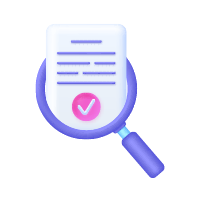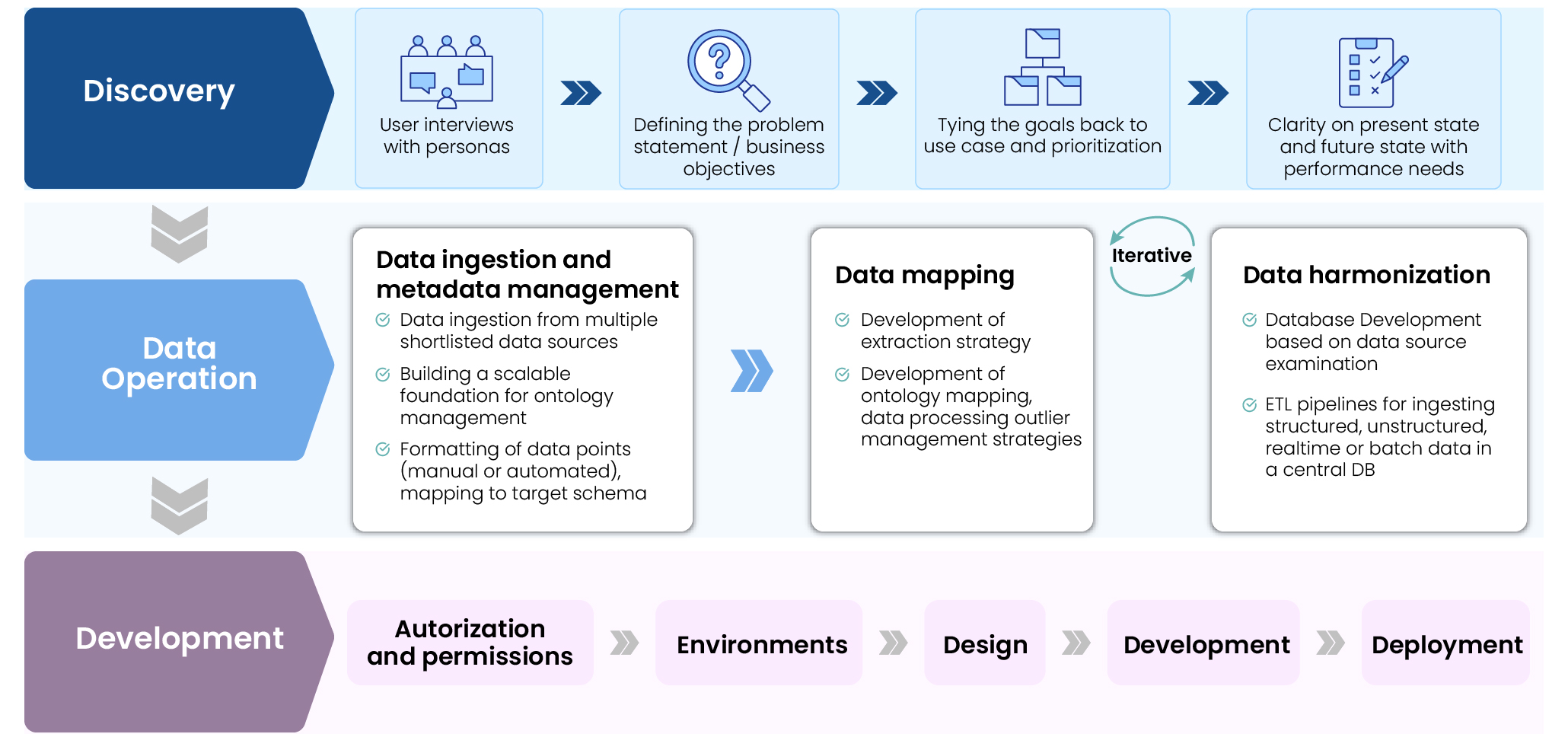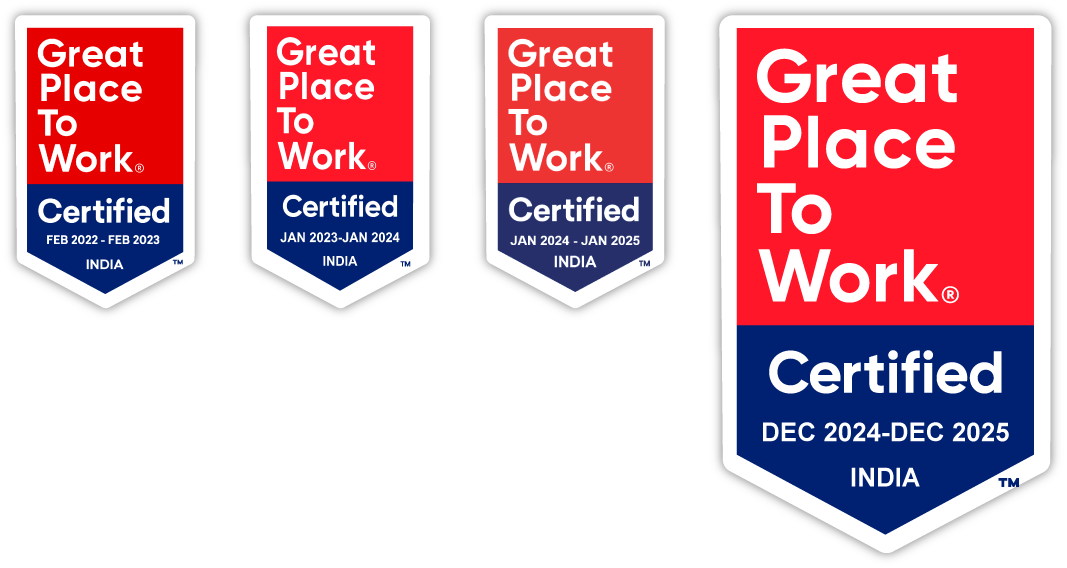Overview
A leading pharmaceutical company’s Animal Health division faced major challenges managing its vast and fragmented OMICs datasets. With data spread across legacy systems, lack of standardization, and inefficient workflows, research productivity and compliance were at risk. Excelra partnered with the client to design a scalable, role-based OMICs data lake tailored for diverse scientific users. The platform centralized data storage, improved metadata cataloging, and enabled secure, audit-ready access. As a result, the company achieved up to 60% faster data retrieval and a 30–40% boost in research productivity. The cloud-native architecture also supports future data growth and advanced analytics integration.

Our client
Our client is a globally recognized, U.S.-based pharmaceutical company with a dedicated Animal Health division. Their portfolio includes widely used vaccines, parasite control products, and therapeutics. The division’s R&D teams generate large volumes of OMICs data but lacked a centralized and intuitive system to manage this data effectively across functional roles and ensure long-term compliance and usability.

Client’s challenge
- Fragmented data storage: OMICs data was scattered across multiple legacy systems, making it difficult to manage holistically.
- Lack of standardization: Poor cataloging and indexing made dataset discovery time-consuming and inefficient.
- Inefficient access workflows: Slowed down research and analysis efforts, reducing team productivity.
- Compliance risks: Absence of robust data governance and traceability increased the risk of non-compliance with regulatory requirements.
To address these issues, Excelra was engaged to develop a robust, user-friendly OMICs data management system capable of handling legacy and newly generated datasets. The system needed to support diverse user roles—including bioinformaticians, biologists, and project managers—and act as a centralized “one-stop-shop” for OMICs data storage, cataloging, and retrieval.

Client’s goals
A leading pharmaceutical company’s Animal Health division had accumulated a vast amount of OMICs data from legacy research projects. However, they faced significant challenges in storing, retrieving, and analyzing this data particularly in conjunction with external datasets, while also attempting to apply advanced analytics.
Our approach
We followed a phased, user-centric methodology starting with discovery and analysis, and moving into development and implementation ensuring that the final solution aligned with end-user workflows and regulatory standards.

Phase 1: Discovery & Business Analysis
- Conducted user interviews to identify challenges and objectives
- Mapped use cases to business goals and prioritized them based on performance and compliance needs
Phase 2: Data Operations & Implementation
- Defined over 30 user workflows based on detailed personas
- Developed sprint-based features for data ingestion, mapping, and iterative metadata harmonization
- Built advanced metadata search features, including predefined filters and dataset bookmarking
Our solution
Excelra delivered a fully integrated OMICs data platform that enabled:
- Intuitive access and querying across roles and departments
- Metadata-driven project tracking and insights for improved decision-making
- Secure, role-based access controls with audit-ready governance
- Scalable architecture supporting future data growth and analytics integration
- The centralized system improved data visibility, security, and usability.
User Personas & Role-based Access Examples
- Project Manager: Assigned tasks, managed project timelines, and generated summary reports
- Bioinformatician: Accessed metadata, managed workflows, and visualized data to prepare refined datasets
- Biologist (Data Processor): Utilized bioinformatics tools for processing and visualization without needing to code
- Biologist (CRO Collaborator): Monitored outsourced data and accessed CRO results through a dedicated interface

Strategic business impacts
- Up to 60% reduction in data retrieval time
- 30–40% improvement in researcher productivity across data mining, processing, project management, and outsourcing
- Reliable access even over low-bandwidth networks, within defined SLAs
Conclusion
The OMICs data platform developed by Excelra centralized previously scattered datasets, enabling standardized storage, improved cataloging, and seamless data retrieval. Designed with a user-centric approach, the platform caters to diverse scientific roles, streamlining access to critical data. By implementing a centralized repository, data access speeds increased by up to 60%, while secure access controls and robust metadata governance eliminated compliance risks. The platform delivered a 30–40% boost in research productivity across key R&D functions and featured a scalable, cloud-native architecture built to support growing data volumes and evolving cross-functional analytical demands.

